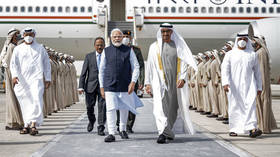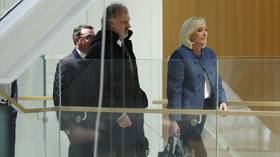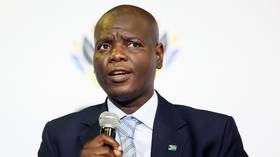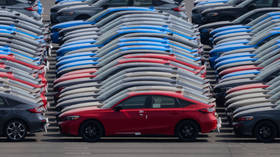India and UAE agree to settle trade in rupees and dirhams

In a major boost to the position of the Indian rupee, New Delhi and Abu Dhabi on Saturday agreed to create mechanisms for settling trade in national currencies, as opposed to the use of US dollars.
During Indian Prime Minister Narendra Modi’s one-day visit to the United Arab Emirates (UAE), one of the largest oil producers in the Middle East, the two nations’ central banks signed a memorandum of understanding to establish a framework to promote the use of local currencies such as the rupee and the dirham for cross-border transactions. They will also link their instant payment systems, India’s Unified Payments Interface (UPI) and the UAE’s Instant Payments Platform (IPP).
"This is a very important aspect of India-UAE cooperation. It paves the way for enhanced economic collaboration and will make international financial interactions simpler," the prime minister said.
The development comes just a day after Modi announced that an agreement had been reached for the use of the UPI payment system in France. The PM said the service will begin from the Eiffel Tower, where Indian tourists will be able to make payments in rupees using a mobile application.
India's Foreign Secretary Vinay Mohan Kwatra described Modi’s trip to Abu Dhabi as “a short but a very significant visit, a landmark in the partnership between India and the UAE.”
Besides the rupee-dirham agreement, it was announced that the state-run Indian Institute of Technology (IIT) would establish a campus in Abu Dhabi in collaboration with IIT-Delhi, while the education ministries of the two nations signed separate agreements on cooperation. IIT-Abu Dhabi will be one of three campuses of the country’s leading tech school, with the other two being in Zanzibar, Tanzania and Kuala Lumpur, Malaysia.
Modi hailed India’s global ambitions in the education sphere. “This marks a significant stride in our educational internationalization and is testament to India's innovation prowess. Education is the bond that unites us, it's the spark that ignites innovation. Together, we will leverage this power for mutual prosperity and global betterment,” he tweeted.
During bilateral talks with the president of the UAE and ruler of Abu Dhabi, Sheikh Mohamed bin Zayed Al Nahyan, both leaders expressed satisfaction that UAE-India relations have witnessed tremendous progress on all fronts. India-UAE trade rose to $85 billion in 2022, making the Arab nation India’s third-largest trading partner for 2022-23 and India's second-largest export destination. India is the UAE’s second largest trading partner.
Last February, India became the first country with which the UAE signed a Comprehensive Economic Partnership Agreement (CEPA). Bilateral trade has increased by approximately 15% since the CEPA came into effect on May 1, 2022. In a further boost to investment opportunities for the UAE in India, Abu Dhabi Investment Authority (ADIA) will set up a free zone in Gujarat International Finance Tec-City (GIFT City), which is modeled on the lines of Dubai International Financial Center (DIFC), in the next few months.
Indian leader also announced his participation in COP28, the UN Climate Change Conference taking place in Dubai from November 30 to December 12. The Indian leader met COP28 president-designate Sultan Al Jaber and assured him of India's full support for the UAE’s hosting of the conference.
Modi, who is known to strike a personal rapport with global leaders, thanked the UAE leader for his hospitality. “The manner in which ties between our countries have expanded, you have made a big contribution to that. Every person in India views you as a true friend," he told President Al Nahyan. The UAE leader reciprocated Modi’s goodwill gesture by serving a full vegetarian meal at a banquet in Qasr-al-Watan presidential palace in Abu Dhabi. The prime minister is known to be a strict vegetarian. In 2015, Modi became the first Indian PM to visit the UAE in 34 years. The Gulf state is not just New Delhi’s key trade partner, but provides employment to over 3.5 million Indians and is a major source of remittance inflows to India.















